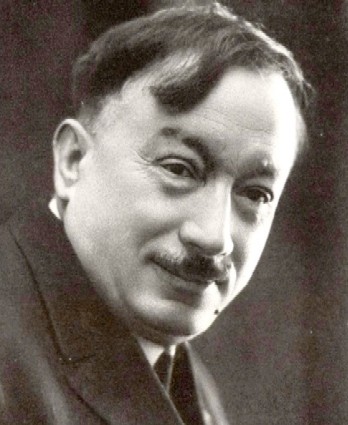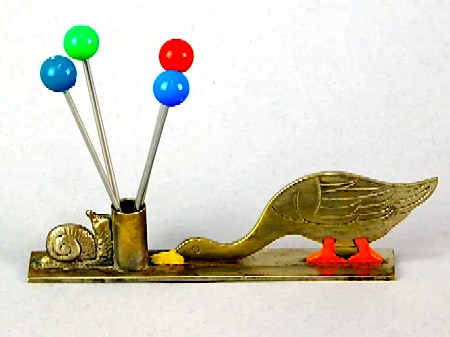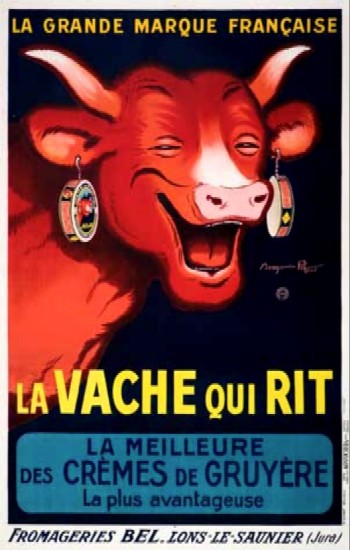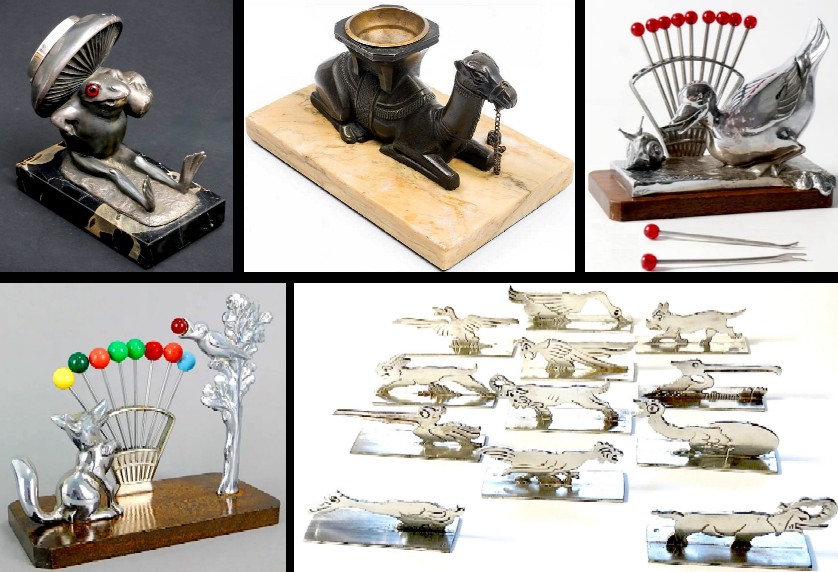
Benjamin Rabier (1864 - 1939)
Benjamin Rabier is probably best known as a French illustrator

Benjamin Rabier
and cartoonist which seems like it would make him an unusual candidate for profile of an Art Deco and Streamline Moderne decor artist. However, he was something of a renaissance man, dabbling in a variety of different media and, as the pictures indicate, he had a place in the world of Art Deco interior design.
Rabier was born in La-Roche-sur-Yon in December of 1864. At the age of fifteen, while attending elementary school on Rue des Fourneaux, he won the drawing prize of the city of Paris suggesting his artistic skills were evident from a young age. His family was not wealthy and was unable to fully support him, he began working when he was 14 at a variety of different jobs including sorting polished gemstones for church ornament merchants.
In December of 1885, Rabier was conscripted into the 33rd Infantry Regiment in Arras. During his tenure in the army, he rose the rank of sergeant major. Even in this role, his creative side shone through. Rabier reported that he was asked by the colonel of his unit to paint targets on the walls of the fort, the three color cockades on their kepis (caps) and to darken the white thread in the uniform tunic seams with India Ink, something he explained required 'extraordinary dexterity'. ('Autobiolgraphie", Benjamin Rabier website, gathered 11/19/24) Following a competition for the task, he was assigned to decorate his regiment's hall of honor most likely in 1887 by his own account. It was likely this that brought him to the attention of the hgher ups who sent him to Paris to sketch uniforms and copy battle watercolors. It was here he met artists Louis Rémy Sabattier, who would eventually work for l'Illustration, and Russian immigrant Emmanuel Poiré, who had adopted the name Caran d'Ache. He left the service in September of 1889.
Upon release from the armed services, Rabier obtained a position as an accountant at Bon Marché department stores. Before leaving the service, he had applied for a position at Préfecture des Hauts-de-Seine and was hired in January of 1890 as an auxiliary weigher in the municipal tax collection department. A few months later he asked to be transferred, taking a position as the sub-inspector of the central market. This job had better hours which allowed him to become the controller for Nouveau Cirque, an upscale circus located in Paris. He continued in his sub-inspector position until 1910, when he was forced to retire because of "brain disorders due to intellectual overwork". ('Des faits, des dates...", Benjamin Rabier website, gathered 11/19/24)
Even with two jobs, Rabier sought an outlet for his artistic endeavors.

Cocktail Sticks by Rabier, Duck and Snail, Sheryl's Art Deco
He was assisted in this by his relationship with Poiré who helped him to get some of his humorous sketches printed in magazines such as La Chronique Amusante and Gil Blas illustré beginning in 1889. His comics were also printed in magazines in the US in the magazine Puck and in the UK in publications such as Scraps, Comic Life and Pick Me Up.) leading to popularity there even before the French started to recognize him. By 1895, his work was being published regularly in Le Rire and Le Pêle-Mêle. He was the first artist to submit comics to Pêle-Mêle when it began in 1895 and it is this above all else which made him known to the French public. By 1898, he was publishing books of his work. He continued to provide artwork to them until 1910. In 1906 he released an illustrated version of La Fontaine's Fables through the Tallendier Editions. He briefly published his own biweekly newspaper aimed at children called Histoire comique et naturelle de animaux from November 1907 to April 1908. He exhibited his art at the 1907 Salon de l'école française and at the Salon du peuple in 1910.
Rabier continued to draw for magazines and publish books. Perhaps his best known character was Gédéon, a yellow duck he created in 1923. Between 1923 and 1939, he published sixteen books, nearly one every year. Gédéon was also featured in some of his other designs, as seen in the images below. As his fame grew, Rabier began to expand into other media. His contributions to the periodical Amusant introduced him to Henry Gauthier-Villars aka. Willy, husband of Colette. This created new opportunities for Rabier who wrote his first comedic play, Le Chateau des loufoques which was performed at the Cluny Theatre in Paris in 1910 and was well received by critics. He continued to write plays for the next 20 years.
In 1916 he became

Laughing Cow Cheese Advertisement by Rabier, Swann Galleries
interested in animated cartoons. Rabier initially wrote scripts and drew the images and Emile Cohl directed the cartoons. After some preliminary efforts, they produced the cartoon Les aventures de Clémentine which focused on a mother duck protecting her ducklings. The produced one other cartoon before Rabier decided to create cartoon on his own. He worked with Navarre productions in 1917 and with Eclipse in 1919. In 1920 he started working with Pathé productions between 1920 and 1922.
A common theme found in Rabier's comics were humorous animals. This led to some interesting opportunities for him. In 1917, at the beginning of World War I, the Ministry of War asked him to design a laughing cow to be painted on the sides of supply trucks. It was called "the Wachkyrie", a parody of the mythic German Valkyries from Richard Wagner's operas. In French, 'Wachkyrie' sounds like 'Vache Qui Rit (Cow that laughs). Cheesemaker Léon Bel saw the design and wanted to create something similar for his newly launched soft cheese which he called "The Laughing Cow". (See the advertising poster at left.) He approached Rabier in 1921 to design the brand's emblem, a laughing cow wearing earrings which were made of Laughing Cow cheese. The essence of his design is still featured on their Cheese today. Although this is most famous, he designed a number of advertisements for companies.
Rabier started crossing into the world of design around 1908. Among the many ventures he was involved with around that time were a line of wooden toys, furniture and pencil cases typically featuring humorous animals. It is here that Rabier enters into the world of Art Deco design. In the 1930s, barware and other adult-targeted designs for the home with entertaining animal designs became popular in France. Quite a few of these items were cocktail sticks, which were used to spear items for or while drinking cockatails such as olives, snails and similar items. (This explains why so many of them feature snails.) While Rabier's work was typically two dimensional, he drew the designs which were created by companies such as Cado and Bizette. (Little is known about these companies although they produced products by other designers.) Some, but not all, of these designs were signed by him.
Sources Not Mentioned Above:
"Benjamin Rabier", Wikipedia, gathered 11/19/24
"Benjamin Rabier", French Wikipedia, gathered 11/19/24
"Benjamin Rabier", Universalis Encyclopedie, gathered 11/19/24
Michel Huguet, "Benjamin Rabier", Benjamin Rabier website, gathered 11/19/24
Benjamin Rabier (1864-1939)", Citebd.org, gathered 11/19/24
"Louis Rémy_Sabattier", Wikipedia, gathered 11/19/24
"Nouveau Cirque", Wikipedia, gathered 11/19/24
"Le
Pêle-Mêle", BnF Gallica Website, gathered 11/19/24
Original Facebook Group Posting  Benjamin Rabier Products, From Left: Frog Paperweight, Master Posters; Camel Incense Burner, Invaluable; Duck and Snail Cocktail Sticks, Etsy; Aesop's Fables Fox and Crow Cocktail Sticks, Sheryl's Art Deco; Silver-Plated Animal Knife Holders. 1st Dibs -
Benjamin Rabier Products, From Left: Frog Paperweight, Master Posters; Camel Incense Burner, Invaluable; Duck and Snail Cocktail Sticks, Etsy; Aesop's Fables Fox and Crow Cocktail Sticks, Sheryl's Art Deco; Silver-Plated Animal Knife Holders. 1st Dibs -